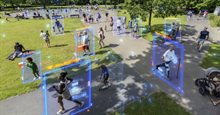On many different fronts, knowledge workers, companies, organisations, and public authorities are working on the energy and climate transitions. There are many innovations ready for use. The big challenge is how to ensure that innovations are implemented and do not just disappear into a drawer?
What is the Societal Embeddedness Level method?
Working with Societal Embeddedness Level increases the chances of policy success, by ensuring timely societal support for climate change measures or climate policy in the Netherlands in general, for example. And this in a way that is healthy, both economically and environmentally. With support from stakeholders, local residents, and public authorities. Some SEL tools are already being used successfully.
Mapping societal support with the SEL method
The SEL method for social support is complementary to the commonly used Technology Readiness Levels (TRLs). The TRLs indicate how advanced a technology is on a scale of 1 to 9. Technology Readiness Level 1 represents the early stage of research and a TRL value of 9 means the technology is ripe for application.
But application is not the same as embedding. Marit Sprenkeling, TNO researcher and co-developer of the SEL method, explains: ‘The higher the Technology Readiness Level, the more you should be concerned with the societal aspects. But even at TRL1, the SEL method has value because you still have time to make adjustments. If you don’t include the societal and administrative aspects in time, you run a high risk of delays at a later stage. Or you even fail completely to embed a measure.’
How exactly does the SEL method work?
The Societal Embeddedness Level method breaks down the embedding of technology and its acceptance by society into four factors:
- Interaction with the environment
Interaction with the physical environment. Spatial planning, nature, the living environment, and societal impact are looked at here. - Role of stakeholders
The role of the various stakeholders. These can be producers and their suppliers, prospective users, local residents, or other parties with vested interests. - Administration and policy
The administrative side, such as legislation and regulations, standards, subsidies, and political support. - Financial and economic value
Here, we look at the market and the financial and economic value, such as a business case or risk analysis when investment is involved.
Four factors in four dimensions
We elaborate each of these four aspects of societal support in four dimensions:
- Exploring barriers, opportunities, and the landscape.
- Evaluation of these barriers, opportunities, and the landscape.
- Embedding measures to increase the chances of an innovation succeeding.
- Applying measures.
Exploration and evaluation are especially suitable for the lower TRL levels, while the measures are usually addressed at the highest TRL levels. This results in 16 (4 x 4) components. Each of these components has different milestones that can be achieved with the use of tools – often tools that already exist. TNO Vector has put these tools together in a toolbox that
includes stakeholder analyses, social lifecycle assessments (LCAs), cost-benefit analyses, and much more. Marit Sprenkeling says: ‘We use these tools in varying combinations. Developers, researchers, as well as public authorities or industrial companies, can use them to describe and reach their milestones. This works in favour of societal support.’
Opportunities and barriers
Inventors know that an invention or innovation does not automatically find its way into practical application. However, socio-economic factors that are essential for societal support and practical application are often not addressed until the later stages of research and development.
‘In particular, the role of the various stakeholders is easily overlooked. It helps if there’s a multidisciplinary team working on a technology. Of course, that doesn’t mean you’ve got everything covered. But it does offer more insight into public support and administrative opportunities and barriers. It also enables you to identify the roles of, for example, users and local residents,’ says Marit Sprenkeling.
TNO Vector and the SEL method
TNO Vector provides the knowledge needed to apply the SEL method through reports, articles, workshops, and customised advice. Sprenkeling adds: ‘We’ve tested the SEL method extensively on innovations such as underground storage of CO2 or hydrogen. The method proves its worth in those areas, but it’s much more universally applicable, for example also in fields such as IT or nanotechnology. We’re now exploring further possibilities.’
Want to read more?
Would you like to know more about social support and the Societal Embeddedness Level? You can also read the article ‘Bridging Social and Technical Sciences: Introduction of the Societal Embeddedness Level’ at MDPI.com of 'The Ecosystem: technology readiness levels are getting a reality check to ensure innovations are socially acceptable' at sciencebusiness.net.




